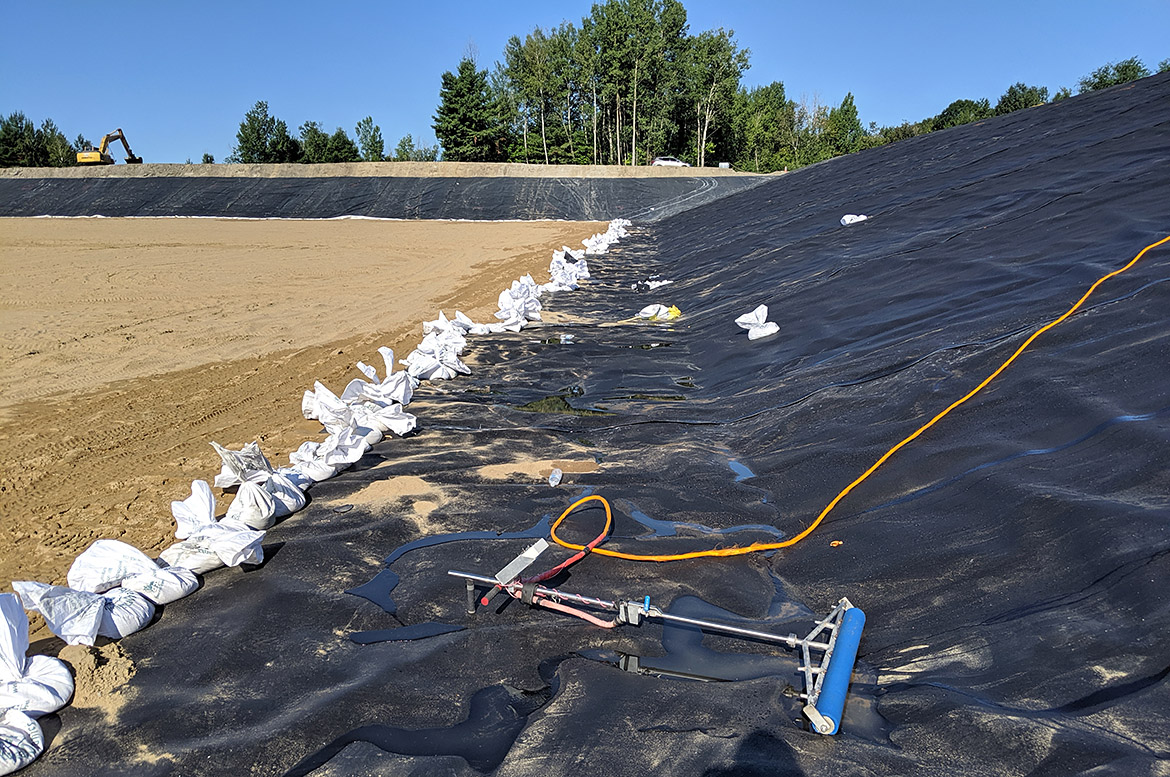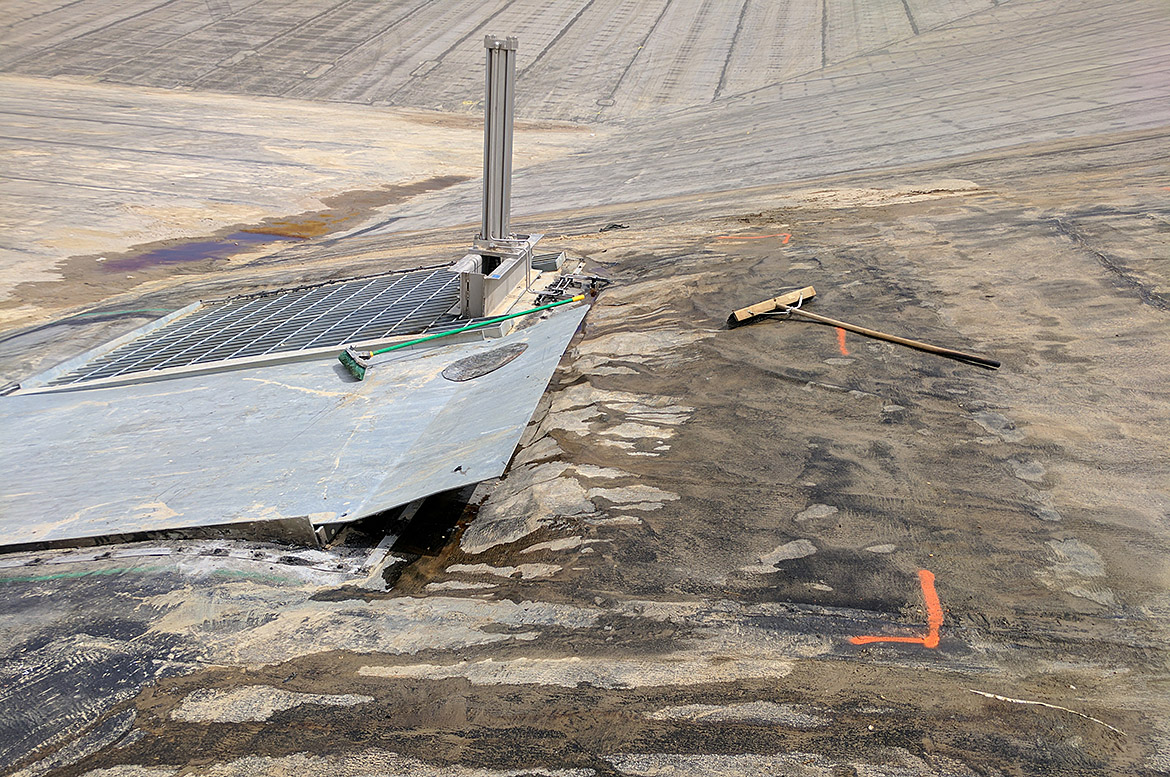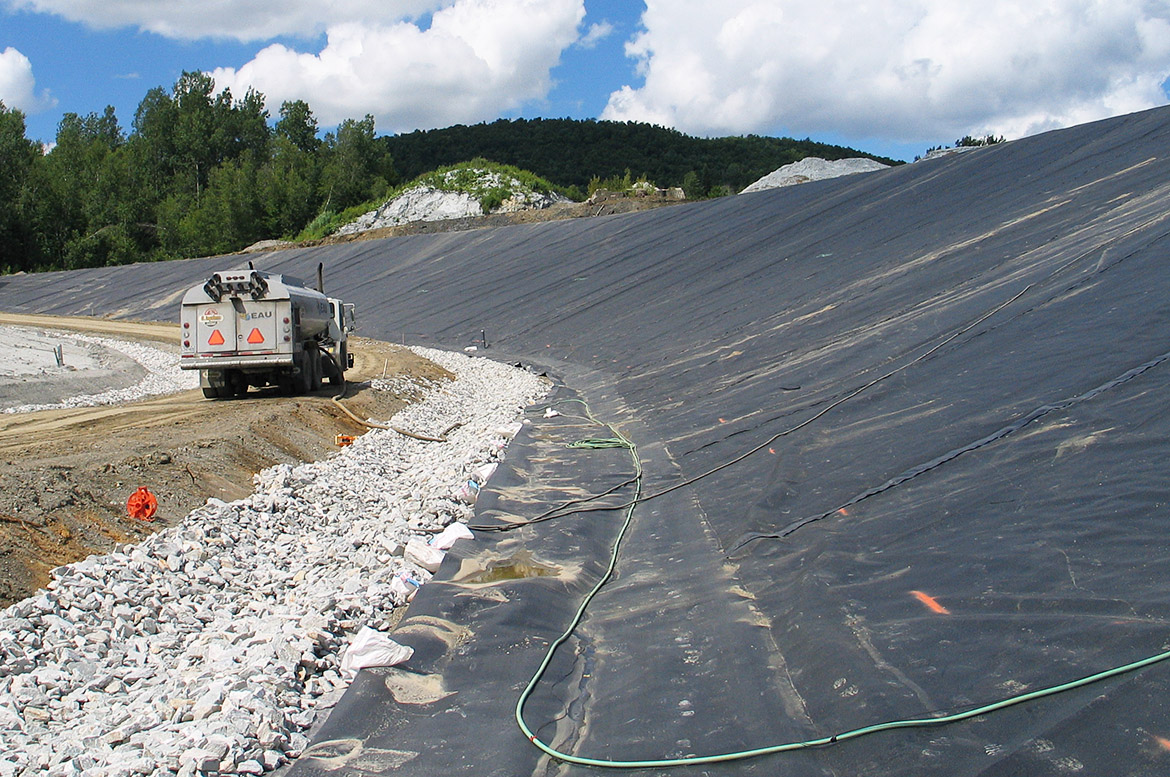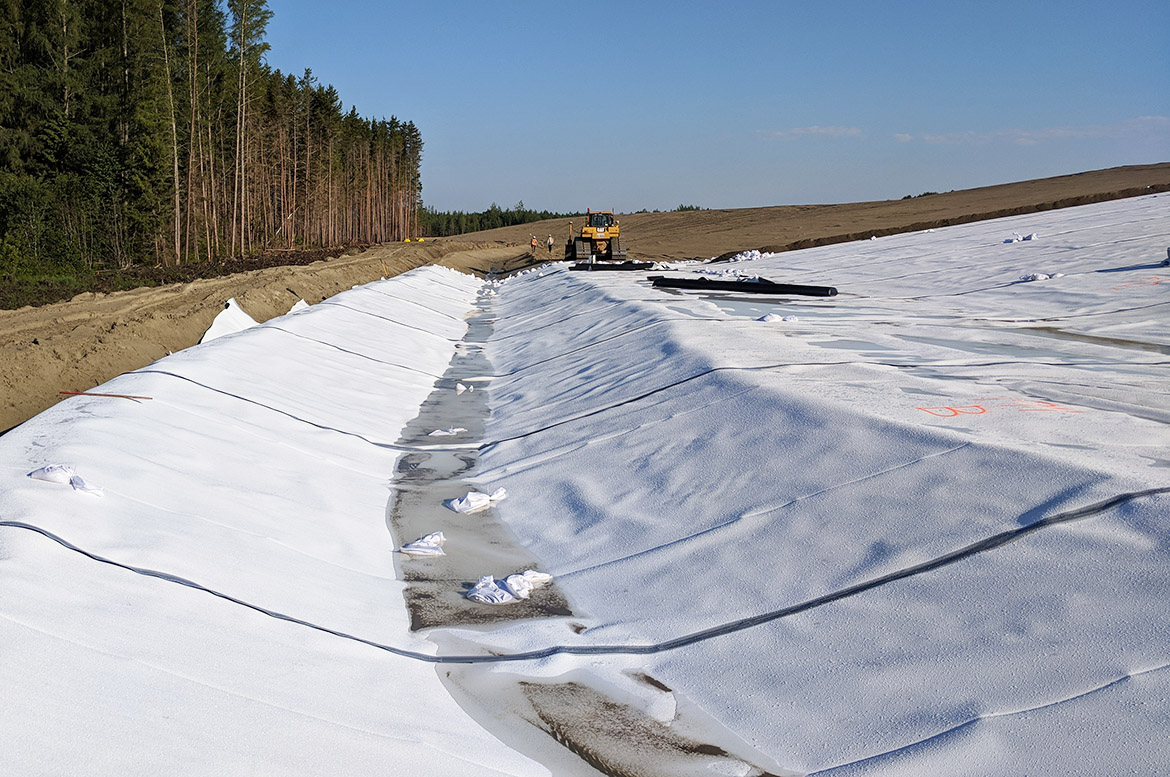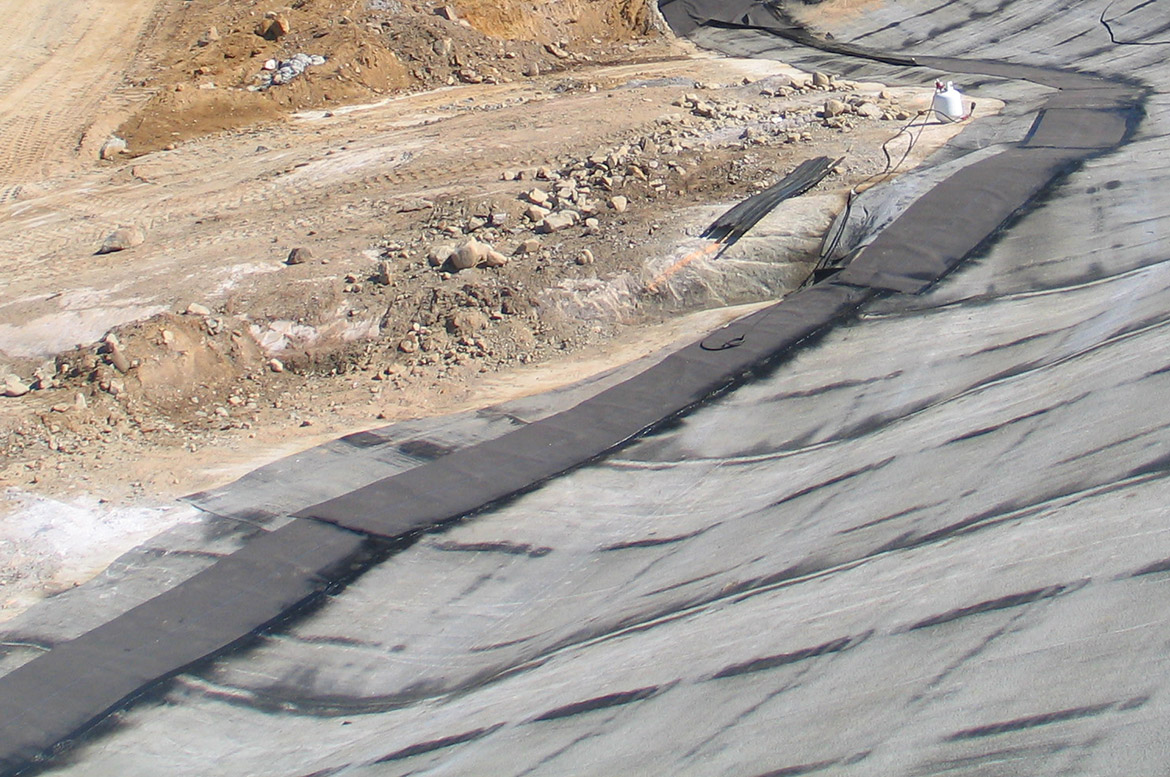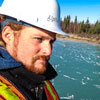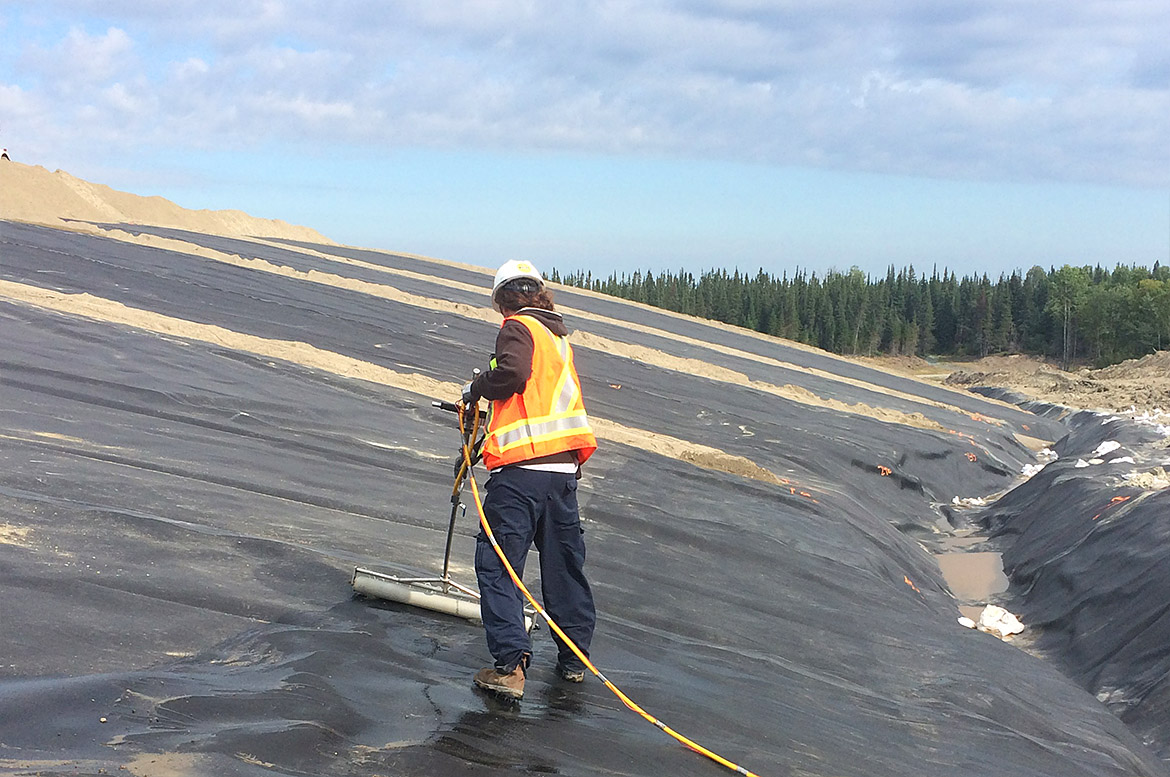
Permanent capping and the water puddle method
The basic principal of all geoelectrical leak location methods is to pass an electrical current through any faults present in the geomembrane, generating electrical signals that can be detected by a qualified operator. Whilst the importance of site preparation is well known for dipole method surveys, it is also a key element of a successful water puddle survey.
Leak location is often performed on a permanent capping layer in order to prevent rainwater infiltration and biogas leaks, allowing covered materials to dry out and improving site performance. However, using water based electrical leak location methods on an earth berm can pose technical difficulties, as water used in the survey will naturally flow towards the base of the berm and possibly enter in contact with the soil layer beneath the geomembrane.
There are many methods to avoid this phenomenon, the easiest being to simply elevate the edges of the geomembrane layer with sandbags to allow water to accumulate at the base of the berm, making sure to periodically empty the accumulated water. However, this is not possible when the geomembrane layer is already anchored in place. In such cases, a temporary barrier of sandbags, bentonite or similar materials can be installed at the edge of the geomembrane layer to catch run-off water. On bituminous geomembrane, an additional band can be welded directly to the geomembrane layer at the base of the berm, which can then be elevated using sandbags.
One way to avoid these workarounds is to include a drainage trench at the base of the berm at the design phase. It is common to install trenches to ensure sufficient drainage of the site, and their integration into the system covered by the geomembrane layer makes a significant difference to the ease and effectiveness of leak location activities.



